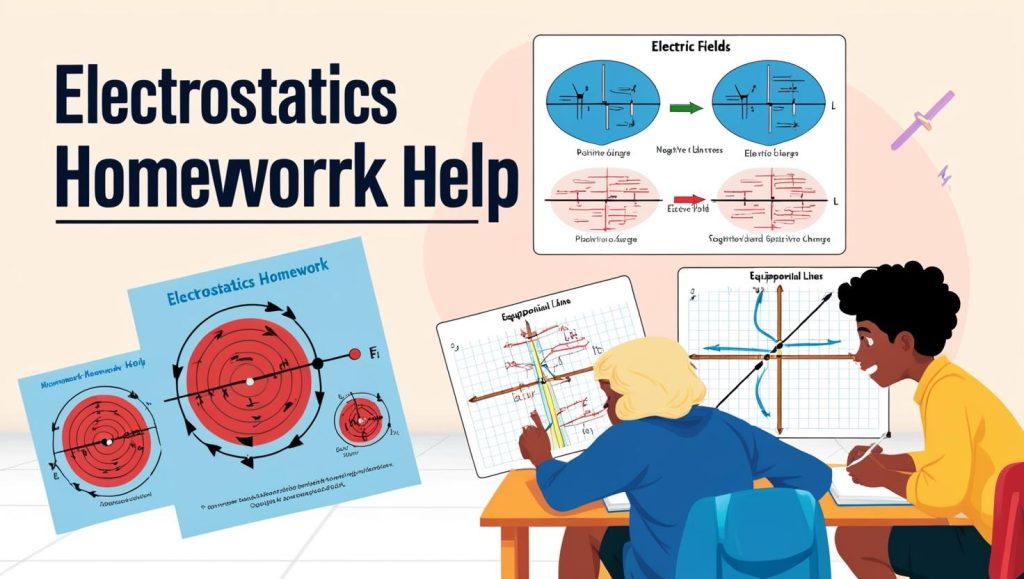Electrostatics is a branch of physics that deals with the study of electric charges at rest, electric fields, and the forces between charges. This guide provides comprehensive Electrostatics Homework Help, covering essential topics, problem-solving strategies, and useful online resources.

Understanding Electrostatics
Electrostatics plays a vital role in many technological applications, from capacitors in circuits to the working principles of photocopiers and air purifiers. The key topics in electrostatics include:
- Coulomb’s Law: Describes the force between two point charges.
- Electric Fields: The effect of a charge on its surroundings.
- Electric Potential: The potential energy per unit charge.
- Capacitance: The ability of a system to store charge.
Key Concepts in Electrostatics
1. Coulomb’s Law
Coulomb’s Law states that the electrostatic force between two charges is given by: where:
- Nm²/C² (Coulomb’s constant),
- are the magnitudes of the charges,
- is the distance between charges.
For more details, visit HyperPhysics.
2. Electric Fields
The electric field due to a point charge is given by: where:
- is the electric field strength,
- is the charge,
- is the distance from the charge.
Explore more at Khan Academy.
3. Electric Potential
Electric potential at a point due to a charge is: This concept is crucial in understanding batteries, circuits, and electrostatic phenomena.
Check Physics Classroom for tutorials.
4. Capacitance and Capacitors
A capacitor stores electric charge and energy. The capacitance is given by: where:
- is capacitance (farads, F),
- is charge,
- is voltage.
Learn more at MIT OpenCourseWare.
Problem-Solving Techniques in Electrostatics Homework
1. Use Coulomb’s Law
Calculate forces between multiple charges by summing vector components.
2. Apply Gauss’s Law
For symmetrical charge distributions, Gauss’s Law simplifies calculations:
3. Utilize Electric Potential Relationships
Potential differences determine charge movement in circuits and fields.
Common Electrostatics Homework Problems
Problem 1: Finding Force Between Two Charges
Two charges of +3μC and -2μC are 0.5 m apart. Find the force between them.
Problem 2: Electric Field at a Point
A +4μC charge is placed at the origin. Find the electric field 0.2 m away.
Problem 3: Capacitance of a Parallel Plate Capacitor
A capacitor has a plate area of 0.1m² and separation of 1mm. Find capacitance. where F/m.
Best Online Resources for Electrostatics Homework Help
- Coursera: Online physics courses.
- arXiv: Research papers on electrostatics.
- PhET Simulations: Interactive physics experiments.
Conclusion
Mastering electrostatics is essential for understanding electric forces, fields, and energy storage. By utilizing core concepts, problem-solving strategies, and leveraging online resources, students can excel in their assignments. For further Electrostatics Homework Help, explore the recommended resources.


